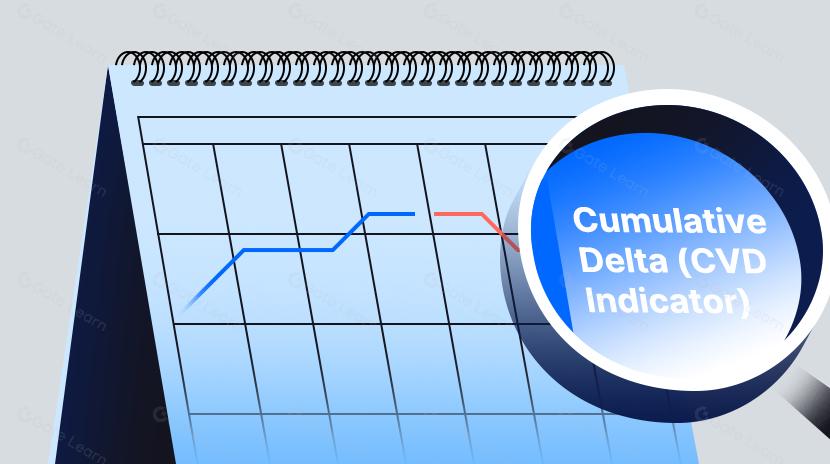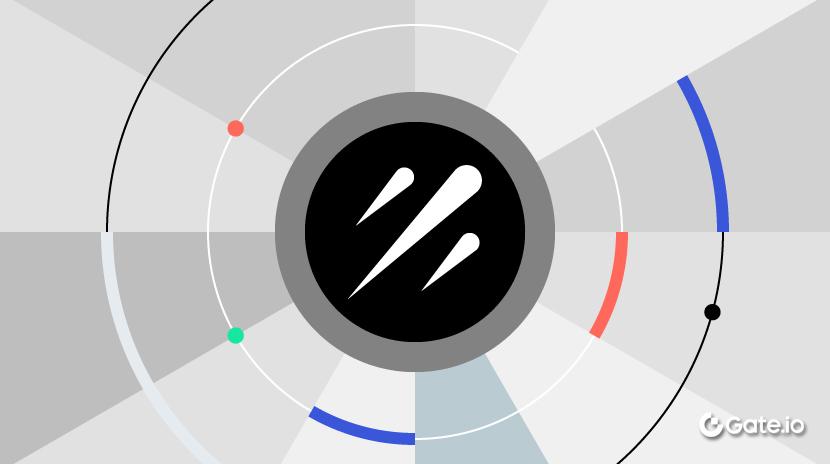Что такое Статтер Сеть? Всё, что вам нужно знать о STT
Расширение технологии блокчейн на различные отрасли затрудняется сложностью разработки, проблемами безопасности и фрагментированной инфраструктурой. Создание и развертывание публичных блокчейнов и децентрализованных приложений (DApps) требует экспертизы в криптографии, распределенных вычислениях и искусственном интеллекте, что делает масштабное принятие затруднительным. Кроме того, отсутствие стандартизированных фреймворков, взаимодополняющих компонентов и эффективных инструментов отладки замедляет инновации. Для решения этих проблем требуются гибкие и масштабируемые решения, позволяющие разработчикам без проблем создавать и интегрировать блокчейн-основанные приложения. Сеть STT была разработана как полнофункциональная блокчейн-платформа, предоставляющая высокопроизводительную инфраструктуру, создание блокчейнов на основе метода drag-and-drop и инструменты, сосредоточенные на метавселенной, обеспечивая более доступную и эффективную экосистему разработки.
Что такое сеть Статтер (STT)?
Сеть Statter была инкубирована компанией Holo Metaverse Group Inc. для предоставления полнофункциональной блокчейн-платформы для экосистемы метавселенной. С момента своего зарождения проект отдавал предпочтение высокопроизводительной блокчейн-инфраструктуре, достигая 100 000 TPS и поддерживая параллельные мультичейн и мультиконсенсусные операции. Сеть была разработана командой из Силиконовой Долины с опытом в области блокчейна, технологий микросхем, визуализации игр и разработки метавселенной, включая специалистов из Google и других ведущих технологических компаний.
Проект был официально запущен в 1 квартале 2022 года на этапе Snow Crash, где была представлена экономическая модель для майнинга, официальный веб-сайт, блокчейн-эксплорер и кошелек, а также опубликован Whitepaper 1.0. В этот период Сеть Стэтера привлекла инвестиции от Фонда Холо, укрепив свою роль как экономическую инфраструктуру метавселенной Холо.
В III квартале 2023 года фаза Code Charter отметила важный этап с запуском основной сети, поддерживая приложения экосистемы блокчейна и вводя план вознаграждения за технологический вклад. Команда также начала разрабатывать технологию перетаскивания и сброса для генерации общественного блокчейна, позволяя разработчикам развертывать блокчейны с модульными компонентами.
К 2024 году Statter Network обновился до основной сети версии 2.0, запустив децентрализованное хранилище и платформу поколения общедоступного блокчейна на основе технологии перетаскивания. Введение "альянса SDK" расширило его экосистему, позволяя партнерствовать с поставщиками услуг, особенно в индустрии образа жизни. Statter Network был добавлен в список на крупной бирже в том же году, значительно увеличив его видимость на рынке и доступность для инвесторов.
В 2025 году фаза путешествия во времени сосредотачивается на модульных платформах DApp, строительстве города Статтер Метавс, аукционировании земли и частных пространств в метавсе, заложив основу для будущей интеграции метавса.
Сооснователь Хосе Игнасио Ривас Негрейра подтвердил, что сеть Statter успешно привлекла более $10 миллионов финансирования от вновь появившегося капитала на Уолл-стрит. Это финансирование позволило проекту ускорить расширение, заключить партнерства с производителями горного оборудования, агрегаторами данных крипто-рынка и биржами, а также дальше стимулировать принятие блокчейна.
Как работает сеть Statter? Многоуровневая структура и шардинг
Сеть Statter - это высокопроизводительная блокчейн-платформа с многоуровневой архитектурой для обеспечения масштабируемости, безопасности и эффективности. Эта структура разделяет основные функции на три отдельных уровня - Foundation Layer, Core Layer и Application Layer - обеспечивая высокую связность и низкую связанность. Модульный подход гарантирует независимую работу различных компонентов, улучшая поддерживаемость, адаптивность и общую производительность сети.
Foundation Layer обеспечивает основную инфраструктуру безопасности, которая лежит в основе сети Statter. Он включает управление цифровой подписью, управление ключами, сетевые узлы, механизмы отказоустойчивости, поддержку хранения и балансировку нагрузки. Эти компоненты взаимодействуют, чтобы обеспечить стабильность системы, оптимизировать распределение ресурсов и обеспечить автоматизированное восстановление после сбоев. Механизм балансировки нагрузки помогает эффективно распределять нагрузку по сетевым узлам, уменьшая перегрузки и предотвращая узкие места.
Ядро слоя обрабатывает блокчейн-процессинг, механизмы консенсуса и выполнение смарт-контрактов. Оно интегрирует управление децентрализованной идентичностью (DID), защиту конфиденциальности, движок смарт-контрактов (SVM), мосты межцепочечной связи, шардинг и распределенное хранилище реестра. Этот слой вводит технологию перетаскивания и сброса, упрощая создание общедоступного блокчейна с помощью модульных компонентов, таких как базовые модули, библиотека компонентов и пул механизмов консенсуса. Ядро слоя позволяет разработчикам настраивать блокчейн-инфраструктуры для конкретных приложений, поддерживая несколько моделей консенсуса.
Уровень приложений обеспечивает интерфейс для пользователей и разработчиков, обеспечивая беспрепятственное взаимодействие с DApps, протоколами DeFi, кошельками, стейблкоинами, NFT и инструментами управления DAO. Он также подключается к рынку приложений плагинов, предлагая услуги, такие как 3D-движки, GIS-картографирование, краевое вычисление, краевая рендеринг, цифровые двойники и децентрализованные решения хранения. Эти инструменты делают Statter особенно подходящим для приложений метавселенной, улучшая взаимодействие в реальном времени, управление виртуальными активами и вычислительную эффективность.

Источник: белая бумага STT
Надежная и постоянная запись
Statter обеспечивает целостность данных и безопасность с помощью механизмов нерушимой регистрации. Транзакции подписываются цифровой подписью с асимметричным шифрованием, обеспечивая проверяемость всех бизнес-запросов и невозможность изменения во время передачи. Механизм консенсуса Statter гарантирует, что данные, хранящиеся в блокчейне, являются неизменными, сохраняя подлинность транзакций на всех узлах.
Для предотвращения несанкционированных изменений Statter использует систему самопроверки в каждом узле. Данные хранятся блоками, и любое вмешательство подрывает всю структуру, позволяя системе немедленно обнаружить и отклонить измененные записи. Если какой-либо узел подвергается повреждению данных или попыткам манипуляции, Statter автоматически извлекает правильные записи из других узлов, обеспечивая мгновенное восстановление и последовательность.
Кроме того, Statter использует многоузловую квази-реальном времени систему проверки данных. Если злоумышленник пытается изменить закрытые ключи или изменить данные реестра, механизм сравнения между узлами протокола обнаруживает несоответствия. Он предотвращает перезапись подделанных данных в реестр.
Конфиденциальность пользователей и конфиденциальность транзакций
Сеть Statter защищает конфиденциальность пользователей, изолируя адреса блокчейна от персональных данных пользователей. В отличие от традиционных систем блокчейна, где истории транзакций публично связаны с адресами, Statter использует многоуровневое шифрование, контроль разрешений и аутентификацию доступа, чтобы предотвратить несанкционированный доступ к записям пользователей.
Statter предлагает механизм независимости транзакций для пользователей, нуждающихся в большей конфиденциальности, который отображает каждую транзакцию на разный адрес. Такой подход гарантирует, что несколько транзакций от одного и того же пользователя не могут быть связаны, улучшая финансовую конфиденциальность и предотвращая отслеживание или анализ со стороны третьих лиц.
Сеть также поддерживает методологии нулевого доказательства (ZKP), позволяя пользователям проверять транзакции, не раскрывая чувствительную информацию. Эта функция особенно полезна для предприятий и учреждений, нуждающихся в финансовых взаимодействиях, ориентированных на конфиденциальность, при соблюдении требований регулирующих органов.

Источник: белая книга STT
Управление ключами и безопасность
Безопасность является фундаментальным столпом сети Statter, и управление ключами играет ключевую роль в обеспечении безопасности цифровых активов. Statter представляет собой безопасный ключевой сейф и систему делегирования учетной записи пользователей, предотвращая несанкционированный доступ, обеспечивая при этом возможность восстановления утраченных или скомпрометированных ключей.
Система безопасного ключа шифрует и разделяет частные ключи между несколькими узлами, обеспечивая отсутствие полного контроля над любым ключом у одного субъекта. Этот распределенный механизм хранения минимизирует риск кражи ключа или несанкционированного расшифрования.
Кроме того, Statter использует аутентификацию с множественной подписью для транзакций высокой стоимости, гарантируя, что несколько сторон должны одобрить критические действия перед их выполнением. Эта функция значительно снижает риск мошенничества, фишинговых атак и несанкционированных снятий, делая Statter безопасной средой для индивидуальных и институциональных пользователей.
Шардинг
Масштабируемость давно является фундаментальной проблемой для сетей блокчейн, поскольку им приходится балансировать децентрализацию, безопасность и пропускную способность транзакций - концепцию, известную как блокчейн трилемма. Традиционные архитектуры блокчейн часто сталкиваются с низкой скоростью транзакций из-за сетевой перегрузки, что затрудняет масштабное принятие. Сеть Statter Network решает эту проблему, реализуя шардированную параллельность задач в сочетании с технологией высокоскоростного асинхронного DAG (Directed Acyclic Graph), достигая пропускной способности уровня 1 в 100 000 транзакций в секунду (TPS), обеспечивая при этом низкую задержку и высокую безопасность.
Шардинг - это техника, которая разделяет сеть блокчейна на несколько более мелких разделов (шардов), позволяя обрабатывать транзакции параллельно, а не последовательно. Сеть Statter использует два типа шардинга: Сетевой шардинг и Транзакционный шардинг.
Сетевое расщепление пулов майнинговых узлов в различные осколки (группы), каждый из которых отвечает за обработку уникального подмножества транзакций. Поскольку различные осколки работают независимо, проверка транзакций происходит параллельно, улучшая эффективность без необходимости избыточного межосколкового взаимодействия.
Transaction Sharding оптимизирует вычислительную нагрузку путем распределения обработки ожидающих транзакций по нескольким группам узлов. Вместо того, чтобы один узел проверял все транзакции, несколько групп обрабатывают различные пакеты транзакций одновременно. Например, если существует 1 000 ожидающих подтверждений, они делятся между несколькими группами майнинговых узлов, сокращая время обработки и устраняя сетевые узкие места.

Источник: белая книга STT
Однако, несмотря на свои преимущества, шардинг вводит проблемы безопасности, особенно в отношении атак на 51% в отдельных фрагментах. Поскольку в каждом фрагменте меньше узлов, чем во всей сети, злоумышленники могут попытаться манипулировать консенсусом в одном фрагменте. Для смягчения этого риска Statter требует от майнеров залогов перед участием в сетевых операциях, что значительно увеличивает стоимость злонамеренной деятельности. Этот механизм стейкинга повышает безопасность, обеспечивая, что шардинг остается как масштабируемым, так и безопасным.
DAG: Высокоскоростная асинхронная технология для параллельной обработки
Для дальнейшего увеличения масштабируемости Statter интегрирует технологию DAG (Directed Acyclic Graph), которая позволяет асинхронную проверку транзакций и устраняет необходимость последовательного производства блоков. В отличие от традиционных блокчейнов, где транзакции записываются блоками и добавляются последовательно, DAG записывает каждую транзакцию как отдельную единицу (TX), что позволяет обрабатывать несколько транзакций одновременно.
В системе на основе DAG новые транзакции связаны с несколькими предыдущими транзакциями, формируя структуру, похожую на граф, а не линейную цепочку. Эта структура позволяет новым транзакциям динамически подтверждать и подтверждать предыдущие транзакции, сокращая время подтверждения и увеличивая пропускную способность. Например, когда добавляется новая транзакция, она ссылается на две или более предыдущих транзакции, обеспечивая параллельное выполнение нескольких цепочек транзакций. Эта модель проверки, похожая на сетку, улучшает масштабируемость и эффективность, предотвращая узкие места, связанные с традиционными архитектурами блокчейн.

Источник: белая бумага STT
DAG также изменяет синхронную модель бухгалтерского учета Statter на асинхронную систему, позволяя одновременные записи. Это означает, что вместо ожидания полного подтверждения блока перед добавлением новых транзакций сеть обрабатывает несколько транзакций параллельно, что значительно улучшает скорость сети. В сочетании с Sharded Task Parallelism DAG обеспечивает масштабируемость уровня 1, позволяя достигнуть 100 000 TPS с практически мгновенной завершенностью транзакции.
Применение сети Statter
Благодаря своей архитектуре с фрагментацией и DAG, Statter обеспечивает 100 000 TPS, обеспечивая принятие в реальном мире в различных отраслях. Ниже приведены три основных случая использования сети Statter:
- Метавселенная и инфраструктура Web3: Statter предлагает инструменты для генерации блокчейна с функцией перетаскивания и интеграции приложений плагинов, что делает его идеальным для метавселенских проектов. Разработчики могут создавать пользовательские публичные блокчейны, интегрировать 3D-рендеринг, картографирование ГИС и краевое вычисление, токенизировать цифровые активы, такие как земля, NFT и аватары. Это позволяет платформам метавселенной создавать безопасные и масштабируемые экономики с мгновенными транзакциями и децентрализованным управлением.
- Децентрализованные финансы и межцепочечные финансы: мост Statter и осколки улучшают эффективность ликвидности, позволяя быстрые и низкозатратные транзакции для DEX, протоколов кредитования и стабильных монет. Благодаря мультицепочечной взаимодействии платформы DeFi могут беспрепятственно передавать активы между различными блокчейнами, обеспечивая конфиденциальность и безопасность транзакций. Модель параллельной обработки улучшает исполнение сделок, уменьшая перегрузку и повышая производительность финансовых приложений.
- Решения для предприятий в области блокчейна: компании могут использовать Statter для безопасного хранения данных, верификации цифровой идентичности (DID) и децентрализованной инфраструктуры. Его приватно-ориентированные смарт-контракты позволяют компаниям развертывать системы управления цепочками поставок, системы мгновенных платежей и подключение интернета вещей без ущерба безопасности или масштабируемости. Функции отказоустойчивости и управления ресурсами делают Statter идеальной платформой для приложений предприятий крупного масштаба, требующих высокой надежности и целостности данных.
Основные функции сети Statter
Сегментированное доказательство работы (SPoW)
Традиционное доказательство работы (PoW) приводит к высокому энергопотреблению и острой конкуренции за вычислительную мощность. Для решения этой проблемы сеть Statter Network представляет Сегментированное доказательство работы (SPoW), низкоэнергетическую, справедливую модель майнинга, которая оптимизирует вычислительные задачи, сохраняя при этом безопасность сети и децентрализацию.
В SPoW сеть майнинга разделена на пулы, и задачи по майнингу разделены и назначены различным пулам, обеспечивая каждому майнинг-оборудованию вычислительную работу без излишней избыточности. Вместо того чтобы отдельные майнеры конкурировали за один и тот же блок, майнинг-оборудование в каждом пуле сотрудничает, выполняя параллельные вычисления. После завершения задачи назначается новая сегментированная задача, способствуя справедливому участию и уменьшая энергоемкие майнинговые операции.
Этот подход снижает повторяющиеся и недействительные вычисления, что позволяет сделать майнинг более энергоэффективным, сохраняя децентрализацию. Statter гарантирует, что маленькие майнеры могут участвовать, способствуя более устойчивой и справедливой майнинговой экосистеме. Кроме того, в механизмы стейкинга встроены для увеличения затрат на 51% атаки, что дополнительно укрепляет безопасность сети.

Источник: белая книга STT
Генерация публичного блокчейна методом перетаскивания
Один из наиболее интересных инноваций Statter - это технология генерации общедоступного блокчейна с функцией перетаскивания, которая упрощает создание и развертывание новых блокчейнов. Вместо необходимости обширных знаний в области программирования разработчики могут использовать заранее построенные модули и компоненты для разработки своего собственного блокчейна в экосистеме Statter.
Инструмент перетаскивания позволяет разработчикам выбирать из библиотеки компонентов, включая сетевые модули, модули учетной книги, механизмы консенсуса, системы цифровой идентификации, движки смарт-контрактов и инструменты межцепочного взаимодействия. Одним щелчком система автоматически генерирует и разворачивает новый блокчейн, который по умолчанию работает как спутниковая цепочка на основной сети Statter.
Этот модульный подход позволяет проектам строить высоко настраиваемые блокчейны, оптимизированные для DeFi, NFT, приложений метавселенной, корпоративных решений и игр.

Источник: белая книга STT
Виртуальная машина Statter (SVM)
Выполнение смарт-контрактов на реальных машинах представляет угрозы безопасности, поскольку уязвимости могут быть использованы для атаки на узлы и компрометации сети. Сеть Statter предотвращает эту проблему, представляя виртуальную машину Statter (SVM), безопасную среду выполнения, которая изолирует смарт-контракты от физического оборудования.
SVM работает на каждом узле, обеспечивая однородное выполнение смарт-контрактов по всей сети. Каждый контракт проходит тестирование и валидацию на цепи, что снижает риск ошибок выполнения и нарушений безопасности. Statter также предоставляет готовые компоненты смарт-контрактов, что позволяет разработчикам быстро развертывать или изменять контракты без большого объема кодирования.
Поскольку SVM работает как проверяемый уровень исполнения, все узлы обрабатывают одни и те же транзакции и хранят идентичные состояния контрактов, обеспечивая целостность данных и децентрализацию. Эта система гарантирует точное выполнение каждой транзакции смарт-контракта.

Источник: белая книга STT
Рынок приложений для плагинов Metaverse
Метавселенная требует сложной инфраструктуры, включая 3D-моделирование, аватары на основе искусственного интеллекта, краевые вычисления и децентрализованное хранение. Сеть Statter предлагает рынок приложений для метавселенной, интегрированную экосистему, предоставляющую готовые решения для разработчиков для улучшения виртуального опыта без создания инфраструктуры с нуля.
Разработчики могут получить доступ к готовым инструментам, таким как 3D-движки, GIS-картирование, аватары, работающие на ИИ, рендеринг краев и конфиденциальные вычисления, что упрощает разработку приложений метавселенной. Например, разработчик может выбрать плагин аватара в 3D, который автоматически преобразует селфи в аватар, созданный с помощью ИИ, позволяя пользователям создавать цифровые личности без проблем.
Рынок плагинов также предлагает децентрализованные решения для хранения данных, позволяя DApps хранить и распространять данные высокой ценности по безопасной распределенной сети. Благодаря автоматизированному расщеплению данных информация хранится на нескольких узлах, обеспечивая безопасность, доступность и защиту конфиденциальности данных.

Источник: белая книга STT
Что такое монета STT?
STT - это собственный токен сети Statter, используемый для управления, майнинга и транзакций. Общее количество составляет 1,861 миллиарда единиц, из которых 50,34 миллиона уже находятся в обращении (март 2025 года).
STT - это добываемый актив, который циркулирует и используется во всей экосистеме Statter. Со временем 90% общего предложения STT будет сожжено, уменьшив доступность токенов и обеспечивая дефляционную экономическую модель, которая увеличивает долгосрочную ценность.
Механизм консенсуса SPoW (Segmented Proof of Work) обеспечивает эффективное и энергоэффективное майнинговое звено, сохраняя децентрализацию и справедливость. Майнинг STT следует за блочным временем в 12 секунд, с вознаграждением в размере 120 STT за блок. Для поддержания контролируемого предложения вознаграждения за блок уменьшаются на 25% каждые 12 месяцев. Во время периода бета-тестирования майнеры получали вознаграждение в размере 160 STT за блок для стимулирования раннего участия в сети.
Модель распределения STT обеспечивает безопасность сети, рост экосистемы и стимулы для сообщества. 70% STT выделяется майнерам для обеспечения безопасности блокчейна и поддержки децентрализованного хранения данных. 7% резервируется для стимулирования майнинг-пулов, обеспечивая эффективное распределение вычислительной мощности. 10% посвящается строительству экосистемы, поощряя развитие DApp и расширение блокчейна. 5% поддерживает глобальный рост и вовлеченность сообщества, 5% финансирует исследования и обновления протоколов, а 3% выделяется фонду для обеспечения операционной устойчивости.

Источник: белая бумага STT
Стейкинг - это ключевой механизм в децентрализованной инфраструктуре хранения Statter Network. Майнинговые установки хранят данные, сгенерированные DApp, которые шардируются и реплицируются на нескольких узлах. Чтобы обеспечить стабильность сети, майнеры должны поставить определенное количество STT перед майнингом. Если майнер выходит из сети на слишком долгий срок, применяется штраф за обязательство, отпугивающий ненадежное участие. Однако до выпуска mainnet 2.0 штрафы не применялись, что позволило ранним майнерам свободно участвовать. Через 180 дней поставленные STT могут быть выкуплены в любое время, обеспечивая гибкость для долгосрочных участников.
STT следует дефляционной механике сжигания, уменьшая общее предложение и увеличивая дефицит. Газовые сборы с главной цепи Statter, спутниковых цепей и сборы за создание пула майнинга способствуют постепенному уничтожению токенов. Цель состоит в сжигании 90% общего предложения, оставляя в обращении только 186,1 миллиона STT. Основным источником сжигания являются газовые сборы от создания блокчейна методом перетаскивания и перетаскивания, где тысячи пользовательских цепей генерируют непрерывные транзакционные сборы, приводящие к высокому потреблению токенов. После достижения цели дефляции, сборы за создание пула майнинга будут поддерживать экосистему и рост сообщества, в то время как газовые сборы будут перераспределяться майнерам.
Помимо майнинга и стейкинга, STT функционирует как универсальный обменный токен в экосистеме Statter. Он используется для запуска майнинговых пулов, оплаты комиссий за газ и требований по стейкингу, а также взаимодействия с DApps. Пользователи также могут конвертировать STT в стейблкоины и участвовать в управлении DAO, где количество токенов определяет силу голоса при принятии решений в экосистеме.
Является ли STT хорошим инвестиционным вложением?
STT получает значительные преимущества от сильной полезности в сети Statter, служа в качестве основы для майнинга, стейкинга, транзакций и управления. Его дефляционная модель, направленная на сжигание 90% общего предложения, может поддерживать долгосрочное повышение стоимости путем уменьшения обращающихся токенов со временем. Однако зависимость проекта от майнинговых стимулов и требований к стейкингу означает, что устойчивость сети зависит от продолжения участия. Если участие майнеров снизится или применение экосистемы замедлится, STT может столкнуться с проблемами ликвидности, которые повлияют на его общий рыночный спрос и полезность.
Как владеть STT?
Для того чтобы владеть STT, вы можете воспользоваться услугами централизованной криптовалютной биржи. Начните ссоздание учетной записи Gate.comи получить подтверждение и финансирование. Затем вы готовы приступить к шагам по покупке STT.
Новости о сети Statter
Как сообщалось 12 февраля 2025 года на официальном канале X, Statter Network достиг важного этапа, теперь STT в списке на Gate.com и других двух крупных биржах. Кроме того, данные о цене STT транслируются на восьми глобальных биржах топ-20, что улучшает видимость и доступность на рынке. Токен также отслеживается ведущими агрегаторами по всему миру, дополнительно укрепляя свое присутствие в крипто-экосистеме. Это расширение повышает ликвидность и принятие, позиционируя Statter Network для дальнейшего роста в блокчейн-пространстве.
Примите меры по STT
Check out Цена STT сегодня, и начните торговать своими любимыми валютными парами.
Похожие статьи

Что такое Tronscan и как вы можете использовать его в 2025 году?

Что такое индикатор кумулятивного объема дельты (CVD)? (2025)

Что такое Нейро? Все, что вам нужно знать о NEIROETH в 2025 году

Что такое Solscan и как его использовать? (Обновление 2025 года)

15 криптовалютных проектов уровня 1 (L1), на которые стоит обратить внимание в 2024 году


